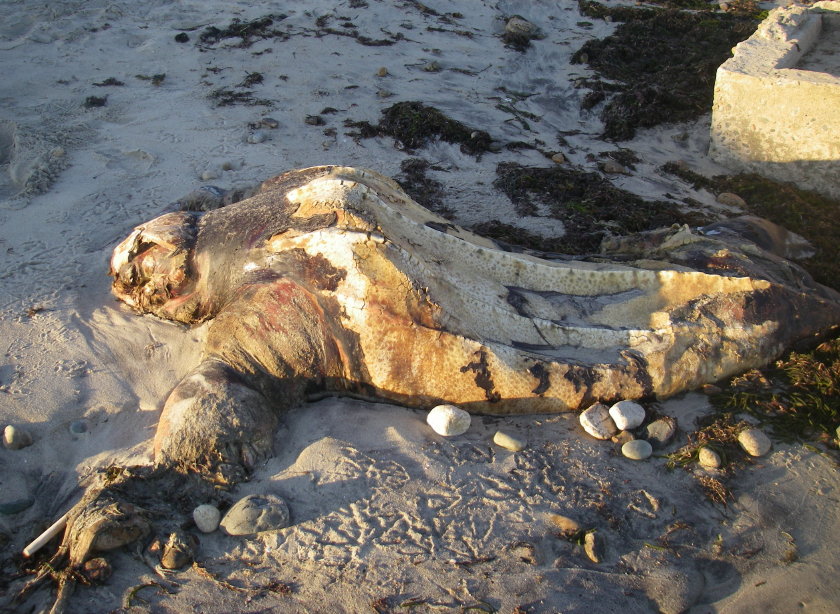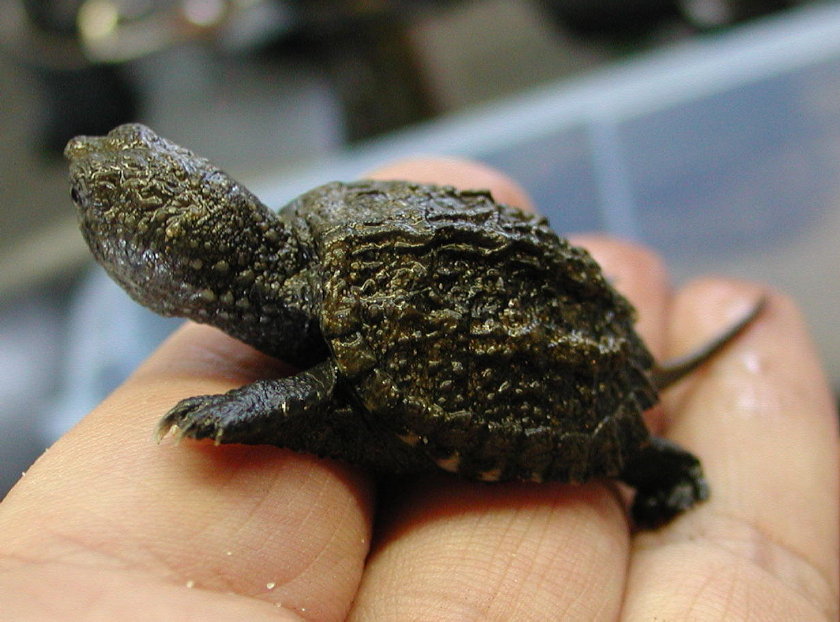Leviathans of the sea and giants of the reptile family, leatherback sea turtles define the term superlative. Ranging in weight up to a ton and the size of a small Volkswagen, no one who has encountered one of these living relics in the wild comes away from the experience unchanged. They are simply magnificent beasts that peacefully ply the world’s oceans in search of slurpy jellyfish. The open mouth of a leatherback sea turtle (see below) is perfectly configured for this quest and is the last thing that a jellyfish senses before the lights go out.
Mouth of 650+ Pound Male Leatherback Sea Turtle
Unfortunately, we humans offer them a complex series of lethal obstacles to avoid during their peaceful voyages. Gill nets drown them, longlines hook them, propellers slice them, weirs trap them and lobster buoys entangle them. Especially during the summer months in Cape Cod and Buzzards Bays as they chase plentiful jellyfish, endangered leatherbacks face a host of potential threats.
Male Leatherback Arrives at Wellfleet Sanctuary for Necropsy
A freshly dead 650+ pound male leatherback beached in Provincetown on Sunday and Mass Audubon’s Bob Prescott, the state sea turtle stranding coordinator, conducted a necropsy at the Wellfleet Bay Wildlife Sanctuary to determine the cause of death and to gather scientific information to help us conserve this endangered species. In addition to his staff, Bob (with large caliper below) was assisted by Kara Dodge, a PhD candidate at UNH and former NOAA sea turtle coordinator, and the Turtle Journal team.
Bob Prescott (Calipers), Don Lewis (Camera) and Kara Dodge (Scalpel)
Too large for normal scales, the mass of leatherbacks is determined by weighing the Mass Audubon pickup truck at the dump with the turtle inside, and then re-weighing the truck without the turtle. The post revealed that this animal had been very healthy. “It had everything going for it,” stated Bob and Kara. Both flippers showed signs of a recent entanglement, but nothing so severe that these wounds would have caused death. Instead, the cause of death was determined to be drowning. The likely scenario for the death of such an inherently healthy animal is that it got entangled in a buoy line with both flippers wrapped in the rope and perhaps its body trunk as well. With the last series of spring tides, the turtle may not have had sufficient line to reach the surface. Like all turtles, leatherbacks are air breathers and will drown if held under water for a sustained period. How this drowned animal had then become disentangled from the lines that had been wrapped tightly around its flippers is merely a matter of conjecture.
This evening we received a call from Bob Prescott that there had been a report of a dead leatherback on a Westport beach near Horseneck. We drove out to the site and after about 30 minutes of searching, we discovered a badly decomposed and deflated leatherback sea turtle. Talking to a local resident, we learned it had been bouncing along the beach for at least the last three days. We estimated the carapace at approximately 161.3 centimeters, but decomposition and deflation may have altered any accurate rendering of its precise size. Bones were exposed throughout from head to back to flippers.
Decomposed Leatherback Sea Turtle in Wesport, MA
Snapping Turtle Hatchling
You’re right. Snapping turtles aren’t endangered and they’re not leatherbacks. But that doesn’t diminish the joy in helping a hatchling find hospitable habitat where it might have a fighting chance of survival. Saving one turtle … even a snapper … isn’t a bad way to close the day.



